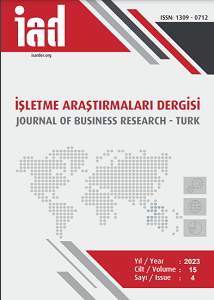Seçilmiş Bist Alt Endekslerinde Etkin Piyasa Hipotezinin Sınanması
Testing the Efficient Market Hypothesis in Selected Ise Sub-Indices
Author(s): Ahmet Demiralp, İbrahim Sezer BellierSubject(s): Business Economy / Management, Financial Markets
Published by: Orhan Sağçolak
Keywords: Efficient market hypothesis; Ise indices; Unit root tests; Linearity;
Summary/Abstract: Purpose – Testing the validity of the efficient market hypothesis for the XHARZ, XGIDA, XUTEK, and XELKT sub-indices traded in the stock exchange Istanbul is the purpose of this study. Design/methodology/approach – Increases and decreases in indices may not be in linear form. Since linear unit root tests applied by ignoring nonlinearity will show biased results, Harvey et al. (2008) and Fourier linearity tests were applied. Then, ADF and Hepsağ (2021) unit root tests were used to test the validity of the efficient market hypothesis of the variables. Findings – Harvey et al. (2008) according to the result of the linearity test, concluded that all indices are not linear. According to the results of the F constraint test performed for the Fourier linearity test, the Fourier terms of any of the indices were not significant. For all indices, Hepsağ's (2021) unit root test showed stationarity. For this reason, it has been concluded that the efficient market hypothesis is not valid for all indices according to the results obtained in the Hepsağ (2021) unit root test. According to the classical ADF unit root test, it has been found that the efficient market hypothesis is acceptable for all indices. Discussion – The Efficient Market Hypothesis was accepted according to the applied ADF unit root test. It is known that due to the non-linearity of the variables, the ADF test will tend to reject the basic hypothesis stating that the series is not stationary. Therefore, the Hepsağ (2021) unit root test, which takes nonlinearity into account, was also included in the analysis. It has been concluded that the efficient market hypothesis is not valid for all ISE sub-indices selected as a result of the Hepsag (2021) unit root test, which takes ESTARtype nonlinearity into account.
Journal: İşletme Araştırmaları Dergisi
- Issue Year: 15/2023
- Issue No: 4
- Page Range: 2807-2815
- Page Count: 9
- Language: Turkish

